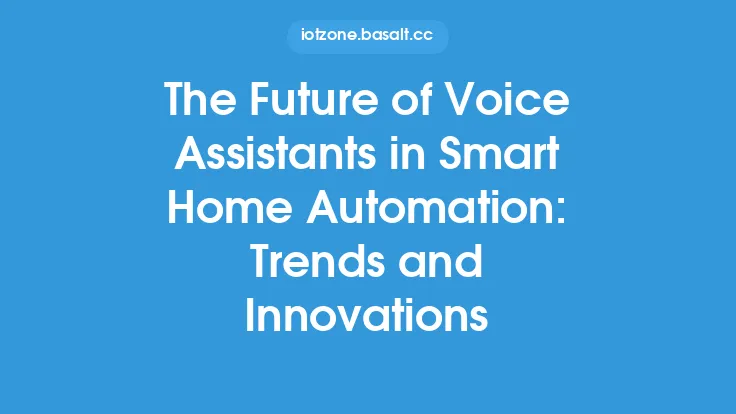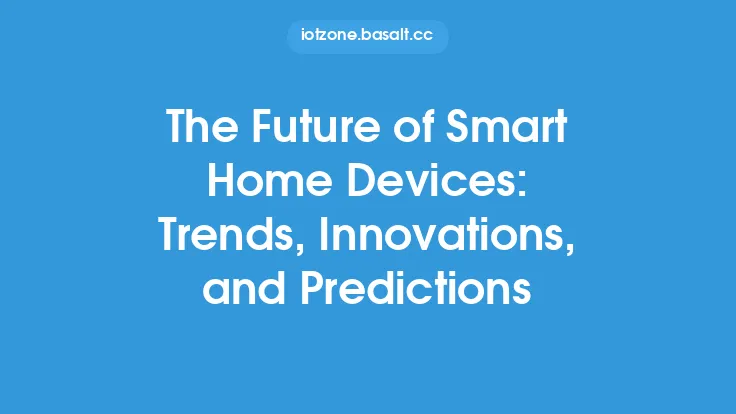The rise of voice assistants has revolutionized the way we interact with our smart homes, making it easier and more convenient to control various devices and systems. At the heart of this revolution is the impact of voice assistants on the user experience, which has been transformative. In this article, we will delve into the details of how voice assistants have improved the smart home user experience, exploring the technical aspects, benefits, and challenges associated with this technology.
Introduction to Voice Assistants and Smart Home User Experience
Voice assistants, such as Amazon Alexa, Google Assistant, and Apple Siri, have become an integral part of smart home automation. These virtual assistants use natural language processing (NLP) and machine learning algorithms to understand voice commands and control various smart devices, including lights, thermostats, security cameras, and entertainment systems. The integration of voice assistants with smart home devices has enabled users to control their homes with ease, using simple voice commands. This has not only enhanced the user experience but also increased the adoption of smart home technology.
Technical Aspects of Voice Assistants in Smart Home Automation
From a technical perspective, voice assistants use a combination of hardware and software components to interact with smart home devices. The process begins with the user issuing a voice command, which is then processed by the voice assistant's NLP engine. The NLP engine uses machine learning algorithms to recognize the user's intent and identify the relevant smart device or action. The voice assistant then sends a command to the smart device, which executes the desired action. This process is made possible by the use of protocols such as Zigbee, Z-Wave, and Bluetooth, which enable communication between the voice assistant and smart devices.
Benefits of Voice Assistants in Smart Home Automation
The benefits of voice assistants in smart home automation are numerous. One of the primary advantages is the convenience they offer. With voice assistants, users can control their smart home devices without having to physically interact with them. This is particularly useful for people with disabilities or those who have limited mobility. Voice assistants also enable users to control multiple devices with a single command, making it easier to manage their smart home. Additionally, voice assistants can learn the user's preferences and adapt to their behavior, providing a personalized experience.
Challenges and Limitations of Voice Assistants in Smart Home Automation
Despite the benefits, there are also challenges and limitations associated with voice assistants in smart home automation. One of the primary concerns is privacy and security. Voice assistants are always listening, which can raise concerns about data privacy and security. Additionally, voice assistants can be prone to errors, particularly if the user's voice is not clear or if there is background noise. Furthermore, the integration of voice assistants with smart home devices can be complex, requiring technical expertise and compatibility with various devices and protocols.
Best Practices for Optimizing Voice Assistant Performance in Smart Home Automation
To optimize the performance of voice assistants in smart home automation, there are several best practices that users can follow. First, it is essential to choose a voice assistant that is compatible with the user's smart home devices. Second, users should ensure that their smart home devices are properly configured and connected to the voice assistant. Third, users should use clear and concise voice commands, avoiding background noise and distractions. Finally, users should regularly update their voice assistant and smart home devices to ensure that they have the latest features and security patches.
Future Developments and Trends in Voice Assistants for Smart Home Automation
The future of voice assistants in smart home automation is exciting and rapidly evolving. One of the trends is the integration of voice assistants with artificial intelligence (AI) and machine learning algorithms, enabling more personalized and adaptive experiences. Another trend is the development of multi-modal interfaces, which enable users to interact with their smart home devices using voice, touch, and gesture commands. Additionally, there is a growing focus on privacy and security, with voice assistants and smart home devices incorporating advanced encryption and authentication protocols to protect user data.
Conclusion and Recommendations
In conclusion, voice assistants have revolutionized the smart home user experience, making it easier and more convenient to control various devices and systems. While there are challenges and limitations associated with this technology, the benefits are numerous, and the future developments and trends are exciting. To get the most out of voice assistants in smart home automation, users should follow best practices, such as choosing compatible devices, configuring devices properly, using clear voice commands, and regularly updating their voice assistant and smart home devices. By doing so, users can enjoy a seamless and personalized smart home experience that enhances their daily lives.





